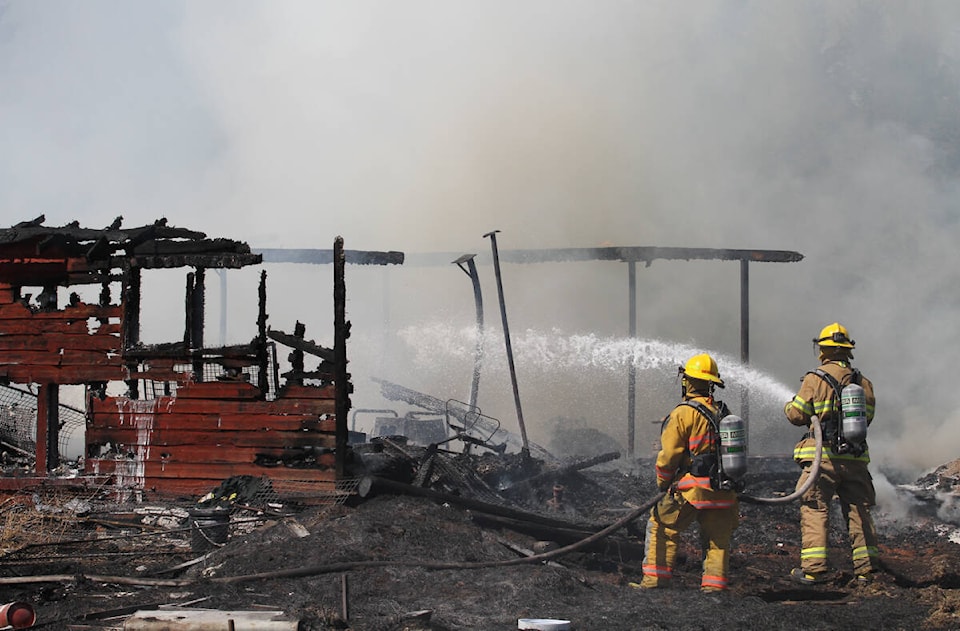The number of medical calls Red Deer County firefighters respond to has soared 50 per cent in the last two years.
Before 2020, about 200 of the 650 or so calls that the county’s roughly 100 paid, on-call firefighters responded to were medical calls. In 2020, the number of medical calls jumped to 300 and about the same number came in last year, boosting the number of calls coming in to more than 800.
Why there has been such a noticeable spike in medical calls — typically involving more severe medical emergencies such as cardiac or respiratory issues or serious injuries — remains a bit of a mystery.
The increase occurred during the pandemic, but it is not at all clear whether there is some connection, said Dave Brand, county community and protective services director.
Alberta Health Services (AHS) said that over the last several months, EMS saw a 30 per cent jump in emergency calls “with demands on the service now at historic levels.”
In addition to the pandemic, opioid-related 911 calls are up significantly and there has been a spike in calls for weather-related incidents. Inter-facility patient transport numbers are also up, says AHS.
“Staff illness and fatigue are also contributing to challenges in the EMS system.”
AHS says the issues being faced are not unique to Alberta. Pressures on EMS are being felt in other provinces and even internationally.
“Despite this historic increase in demand, EMS continues to respond to the vast majority of serious 911 calls quickly and appropriately.”
Brand said the county is watching closely to see if numbers return to more usual levels now that the pandemic appears to be waning.
Call type aside, the increase in calls means more work for the county’s volunteer firefighters, who are paid when they are responding to calls.
“More responses means more man-hours and more personnel hours spent and therefore more expenditure.”
Unlike motor vehicle collisions, where the county is able to charge some response costs to insurance companies, medical calls are not reimbursed.
It is considered a service that county residents pay for through their taxes. Likewise, county residents do not face bills if firefighters respond to a house or farm building fire unless obvious negligence is involved. Repeated unnecessary false alarms could also cost a property owner.
If medical calls continue to be a growing percentage of firefighters’ work it could have an impact on future training, he said.
“It shifts the paradigm by which we train as well because you train to respond to the types of calls you need to go to,” he said.
County firefighters have at minimum a level of first aid training that allows them to administer CPR and administer oxygen. About one-third of firefighters are further trained to the advanced first aid level, which certifies them for basic life support, or higher.
In Ponoka County, an increase in medical assist calls has become a concern. Last year, volunteer firefighters were left waiting 18 times for periods ranging from 10 to 25 minutes for an ambulance and its more highly trained paramedics or emergency medical technicians to arrive.
The county said its volunteer firefighters, who have basic first aid, are not trained as first medical responders. It is feared that throwing firefighters into situations they are not trained for will make it more difficult to retain and recruit volunteers.
Brand said Red Deer County’s training program has allowed it to meet some of the demands of medical calls “and we continue to evaluate our service call profile to ensure our members are being trained commensurate to the types of emergencies we are responding to.”
